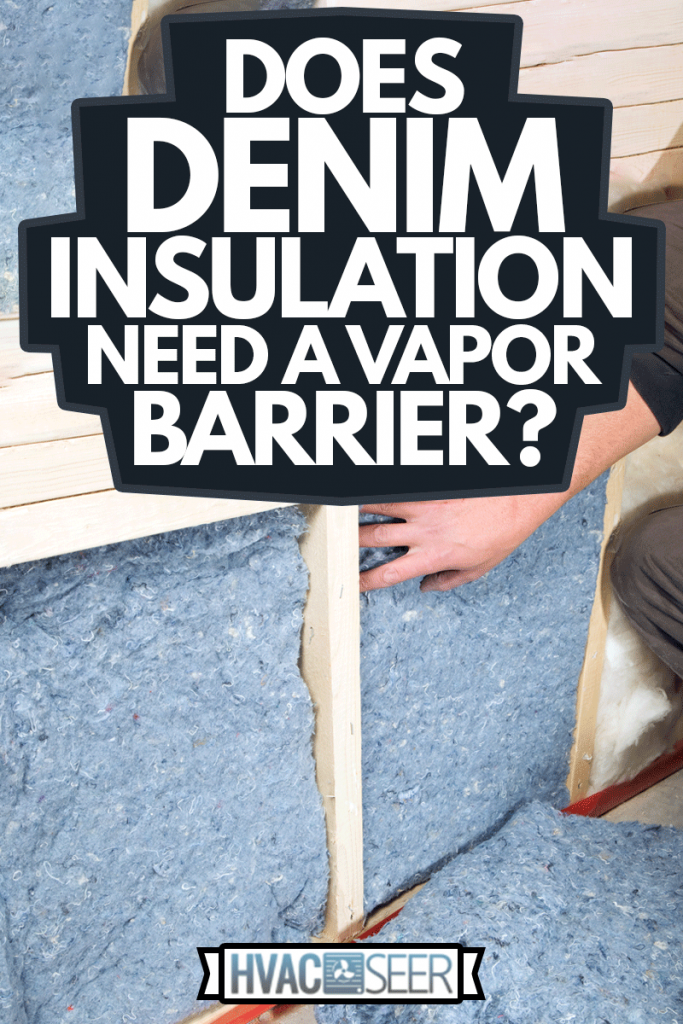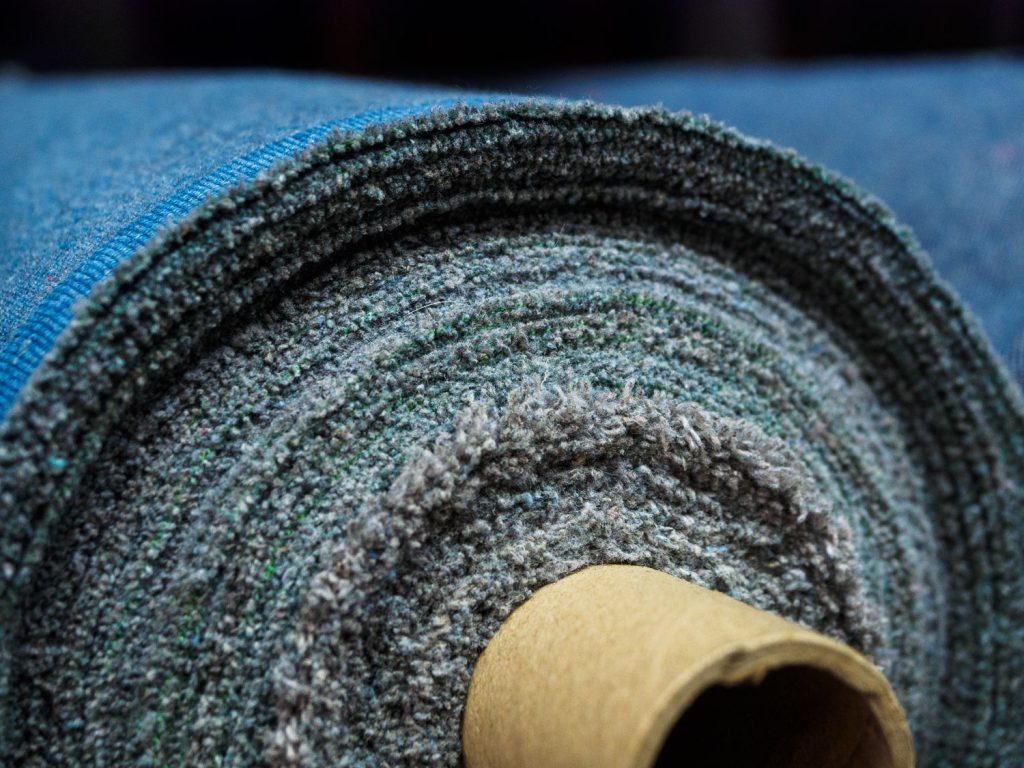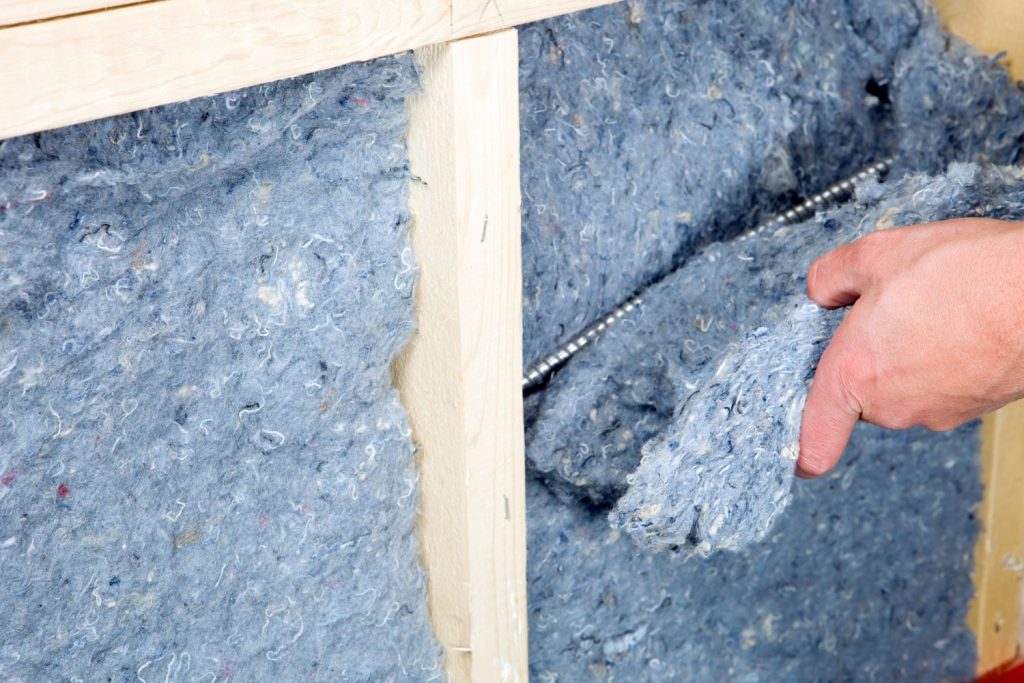As concerns with personal health and the environment have risen, more consumers are looking for greener solutions for their homes than ever before. Denim insulation may be one of the greenest options available. You may want to know if you'll need a vapor barrier. We have thoroughly researched this topic for you and have found some answers.
Though denim insulation does have certain materials added so that it is moisture resistant, it does not usually come with a liner. Most professionals agree that you should install a vapor barrier when using denim insulation.
There may be instances where you would not install a vapor barrier. Keep reading as we discuss when and how you can use a vapor barrier. We'll break down the effectiveness of denim insulation and how to properly install a vapor barrier for it.

When Should You Use A Vapor Barrier

In most cities and counties, the decision on whether to use a vapor barrieror not may already be made for you. Before insulating for the first time, always consult your local building codes to see if there is any guidance or regulations regarding the use of vapor barriers.
Generally, in climates where high humidity is possible and common, you will want to use a vapor barrier. In drier climates, the building codes may not specifically specify a barrier and the decision may be left up to you. Due to the content of denim insulation, professionals recommend using a vapor barrier with this type of insulation in any climate.
Click here to see an example of a vapor barrier on Amazon.
Should You Use A Vapor Barrier In An Attic
There are some differing opinions in the home improvement world as to whether you need to use a vapor barrier in the attic or not. If you plan to finish your attic and you are in a cooler climate, you may want to use a vapor barrier. Be sure to have an air barrier like drywall to protect your insulation and vapor barrier.
For warmer southern climates, if it is not specified in the building codes, you may choose to use baffles for great air circulation and not have a vapor barrier. Some experts state that in these climates, a vapor barrier could retard the airflow needed to keep mold and damage from affecting the studs and structure.
Click here to see an example of a baffle on Amazon.
Manufacturers of denim insulation advise using a semi-permeable vapor barrier. They ultimately refer consumers to local building codes for the final decision on whether one is necessary.
How To Install A Vapor Barrier For Denim Insulation
Installing a vapor barrier is a simple DIY job. Using a staple gun, begin in one corner and staple the barrier to the studs pulling tight. You'll want to staple every 12 inches to maintain tension in the barrier. Overlap the material to maintain the best protection.
After you have covered the whole area, cut and tape the barrier around windows and electrical fixtures. Make sure staples are flat and evenly distributed.
Click here to see a staple gun on Amazon.
Some professionals and DIYers have found it easier to begin in the middle when installing a vapor barrier on the ceiling. The following video demonstrates a ceiling install.
On What Side Do You Put The Insulation Vapor Barrier
Since denim insulation does not come with a vapor barrier already on it, you'll want to make sure you are installing your vapor barrier on the correct side of the insulation.
The vapor barrier goes on the warm heated side of the insulation. This means that in cooler climates, the warm side is facing the room. In hot climates, the warm side will be on the exterior side of the insulation against the exterior wall or ceiling.
What Type Of Vapor Barriers Are There
There are many types of vapor barriers that come in three different classes. They are classified based on their permeability. The most common types of barriers are either some form of paper, wood, glass, or fiber.
Older homes have more airflow. A vapor barrier can be painted directly on the insulation in areas and homes where airflow is not tightly controlled.
Click here to see this vapor barrier paint on Amazon.
How Well Does Denim Insulation Work?

Denim insulation is made of 85 percent recycled denim. The cotton is 100 percent recyclable. In addition to its great sustainability ratings, denim insulation is known to function very well. It has a high thermal rating and is great for the acoustics in your home. Denim can insulate against sound 30 to 60 percent more than other materials.
In addition to its great performance, denim is also the safer option. It does not contain harmful chemicals or materials like fiberglass or ceramic wool. These fibers and particles are dangerous if inhaled and can irritate the skin.
What is the R-Value Of Denim Insulation
Building codes will tell you the type of insulation and what R-value you need for the different areas of your home. R-value measures the effectiveness of the insulation. A higher R-value will allow less heat to be lost. A lower R-value means that a higher amount of heat is lost.
Denim Insulation is similar in its effectiveness to cellulose and fiberglass insulation. It currently carries R-values ranging from 13 to 30.
What Types Of Denim Insulation Are There?
Currently, you can purchase denim insulation as a blow in loose fiber or batts. Use loose fiber blow-in for projects such as insulating an unused attic. This insulation is blown in and lays along the attic floor, insulating the rest of the building from the elements.
Batts are packed denim fiber cushions. Use batts in the walls and ceilings of finished rooms. Batts of denim insulation will come oversized to ensure a tight fit.
What Can Lower the Effectiveness of Denim Insulation
Some consumers have found that denim insulation may be less effective right out of the packaging. It compresses and will need time to regain its thickness. Some users find it difficult to cut correctly. An incorrect cut will cause heat loss, lowering the effectiveness of the insulation.
Does Denim Insulation Burn?
Denim has the same fire rating as fiberglass insulation. An "A" rating means that denim will withstand very high heat and is very resistant to burning.
Is Denim Insulation Mold Resistant?
The same substances used to give denim insulation its high fire rating is also what makes it resistant to mold. The borates act as a barrier to moisture and other harmful elements.
Is Denim Insulation More Expensive?

Like other green options and products, denim insulation will cost more to install. It can be 10 to 30 percent more expensive than other types of insulation. In addition to the insulation itself costing more, it will almost always require a vapor barrier. It will incur more costs than other types of insulation.
If you wish to save on the cost of materials and want to install insulation that does not need a vapor barrier, consider using foam insulation. For more information on foam insulation, read our article "Does Foam Insulation Need A Vapor Barrier."
Denim insulation has LEED certification, which means that it is not only energy-efficient but passes tests for air quality and low emissions. It also uses easily renewable materials. Using this insulation can provide tax credits that may offset or help alleviate the high price tag.
Final Thoughts

Now that you know that you should install a vapor barrier with denim insulation start your project! Though denim insulation may be more expensive than other options the benefits of installing the more eco and health-friendly option may out way those costs in the end.
You may also be interested in the following.




